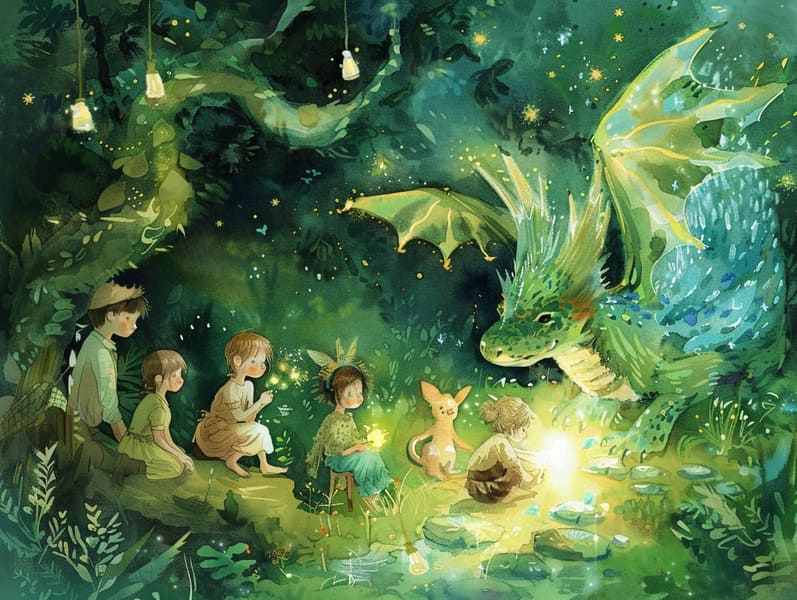A Brief History of Popular Fairy Tales with Its Continued Wonder.
A Brief History of Popular Fairy Tales with Its Continued Wonder.
Blog Article

Historical fairy tales have enduring presence. These narratives have been shared from one generation to the next well before they were ever transcribed. They were born from a variety of backgrounds, including European traditions. They were initially narrated among adults, often carrying themes and messages reflective of the societal norms and beliefs of the time.
Jacob and Wilhelm Grimm, Jacob and Wilhelm (the Grimm brothers), were among the first to collect and release many of these beloved fairy tales. Their collection, "Grimm's Children's Stories," included tales like "Cinderella," "The Story of Hansel and Gretel," and "Snow White," which have since become essentials in the world of famous fairy tales. Similarly, Hans Christian Andersen's enchanting fairy tales, such as "The Mermaid," and "The Ugly Duckling," have gained the love worldwide, guaranteeing their place in the pantheon of iconic fairy tales.
Despite their age, classic fairy tales remain as meaningful as ever, especially as children's night stories. These magical stories are now available in many formats, including gorgeously illustrated books, magical animations, and online fairy tales.
Their unwavering allure can be linked to several captivating elements:
Vital Lessons: Ancient fairy tales often whisper important moral lessons. Tales like "The Wolf and the Liar" teach the value of sincerity, while "The Tale of the Tortoise and the Hare" show the benefits of determination and unpretentiousness. These stories offer young readers clear distinctions between good and bad, molding their moral compass in a soft yet deep way.
Compassion and Insight: Traditional fairy tales frequently present figures facing tests and troubles, inciting children to feel with their struggles and celebrate their triumphs. For instance, "The Story of Beauty and the Beast" highlights the merit of looking past the exterior to perceive the true being of a being, promoting warmth and comprehension.
Cultural Awareness: Many classic fairy tales are interwoven with the cultural contexts from which they bloomed. Understanding these narratives can provide illuminating insights into different traditions, advancing a sense of world awareness and knowledge.
Fantasy and Imagination: The enchanted elements in timeless fairy tales—talking animals—kindle children’s creativity. These narratives carry readers to mythical realms, stimulating imaginative dreams and a sense of marvel that persists a lifetime.
Classic fairy tales are not only bewitching but also illuminating. They work as mesmerizing tools in cultivating various mind and heart abilities in young readers. When old fairy tales are told out loud, they cultivate verbal development by teaching new linguistic elements and complex sentence structures. This practice also improves auditory perception and attention span, as young readers listen intently, looking forward to see what happens next.
Furthermore, contemplating the themes and characters of traditional fairy tales can nurture thinking skills and analytical skills. Little ones are educated to notice patterns, expect results, and realize cause and effect. These explorations also help young ones articulate their thoughts and feelings, contributing to their emotional intelligence.
In today’s modern era, the presence of online fairy tales has made these narratives more acquirable than ever. Digital sites and digital apps give ample collections of famous fairy these guys tales that can be experienced or heard anytime, anywhere. Fairy tales told out loud are particularly in demand, presenting an fun way for the young to appreciate these enchanting tales. Voice books and spoken videos bring characters and settings to life, often paired with mesmerizing musical scores and instrumentals that intensify the tale experience.
The timeless appeal of timeless fairy tales lies in their ability to modify to modern days while holding onto their central values. Contemporary versions of these tales often spotlight more representative characters and modern settings, making them relevant to today’s audience. However, the core values of gallantry, generosity, and truth remain unchanged, continuing to affect kids of all ages.
Timeless fairy tales also offer a sense of contentment and comprehensibility. They put forth a structured narrative with a definite beginning, middle, and end, often closing with the termination of conflicts and the triumph of good over bad. This certainty can be soothing for young ones, extending a sense of dependability in an constantly changing world.
Classic fairy tales continue to enthrall and inform new generations, maintaining their appeal and relevance in modern society. As children's night stories, they put forth a perfect blend of wonder and wisdom, aiding moral values, empathy, and creativity. The accessibility of online storybooks and the in demand status of fairy tales narrated assure that these ancient fairy tales remain obtainable to new generations.
By guarding and making known these narratives, we continue to revere the rich tapestry of narrative artistry and cultural heritage. Whether you are delving into a vividly illustrated book, browsing a online collection, or playing an narrated book, the fascination of old fairy tales is always within reach. These narratives demonstrate of the unchanging power of fairy tales and its ability to connect us across generations and cultures.
Be it you are enjoying a beautifully illustrated book, perusing a web-based collection, or listening through an narrated book, the charm of classic fairy tales is always within reach.
These stories reveal of the continued strength of fairy tales and its ability to hold us together across time and space, creating a bond that delights and instructs alike.